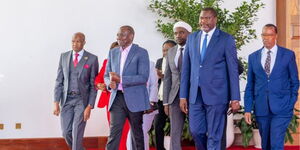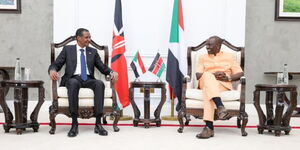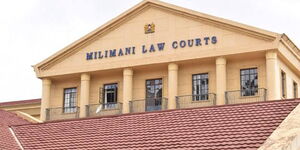South Mugirango MP Silvanus Osoro and other Members of Parliament have proposed a significant reduction in Nairobi County’s budgetary allocation from the national government through radical reforms.
Speaking during National Assembly proceedings on the Fourth Generation Revenue Sharing Formula, the lawmaker was among several other MPs who argued that the capital generates sufficient own-source revenue and does not require the same level of support as other, less financially robust counties.
"Honourable speaker, it is about time that we get practical solutions on shareables. We also need to ask county governments whether they are able to reach their targets in terms of their own source revenues," Osoro said.
The MP singled out Nairobi’s internal revenue collections, which he claims quadrupled those produced by several other counties combined.
“There are counties that do not require such. Looking at Nairobi, the amount of money they collect from their own source revenues is enough to fund five counties. They do not need a piece of the cake from the national government or exchequer,” he added.
The lawmaker’s remarks came at a time when Parliament was embroiled in a debate about the Fourth Generation Revenue Sharing Formula, which will determine how Ksh417 billion in equitable share is distributed among the 47 counties starting in the 2025/26 financial year.
In the new formula, the Commission on Revenue Allocation (CRA) proposed using parameters such as population, equal share, land area, poverty levels and income distance as a way to ensure no county received less than it did under the previous formula.
Despite the formula coming with increased allocations to devolved units, Osoro cautioned that focus should also shift to how effectively funds are being utilised. To address these concerns, the MP proposed an adaptation of a model similar to the National Government Constituencies Development Fund (NG-CDF).
He added, "Going forward, this house needs to come up with legislation that perhaps replicates what happens with NGCDF.”
“We need to come up with a formula on how this money will be spent. It should go down to the people with a vote. We should say, for example, that not more than 60 per cent of the amount should be used for recurrent expenditure. If we are able to replicate the formula used on NGCDF for county governments, then it will have a meaningful impact on the people.”
The NG-CDF typically allocates funds directly to constituencies with strict guardrails on how the money is spent. These funds are typically subject to public participation in project selection, while there are also oversight mechanisms that involve local communities in the utilisation of the funds.
Since administrative costs using NG-CDF money are capped, the money is centred around development and excludes recurrent expenditure.
Osoro was adamant that if county governments adopted similar principles, it would severely reduce wastage of county funds and effectively give the local community more power over how taxpayers' money is spent.












